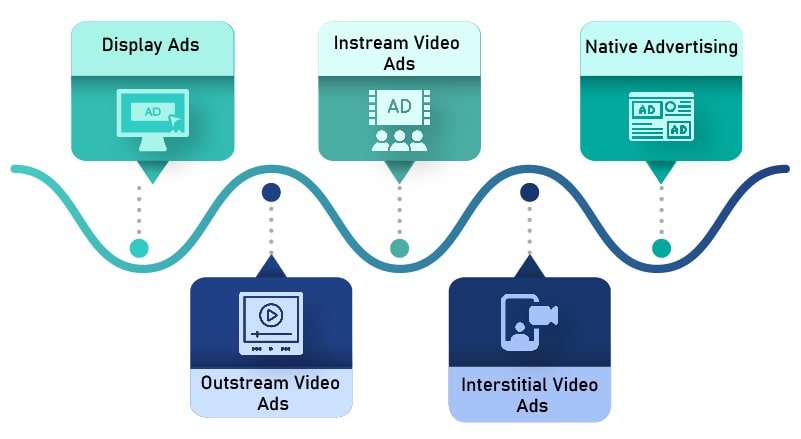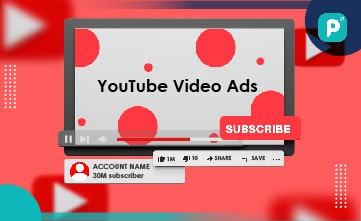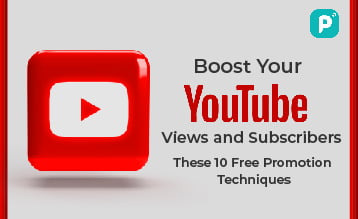Over the years, the proliferating smartphone technology made watching videos more convenient. Furthermore, the pandemic augmented the consumption of online media exponentially. Currently, people spend a substantial number of hours weekly watching online videos.
Video is the second most prevalent type of content on social media for enhancing engagement. Videos have not only revolutionized how businesses market and consumers buy but also how salespeople communicate with & convert prospects and how service providers support customers. Precisely, video is immensely resourceful throughout the flywheel and not just to enhance brand awareness. Youtube video ads serve a great deal when it comes to video marketing.
Video Marketing and its Channels

Video marketing commenced in full swing in 2005 with the introduction of YouTube. Google acquired YouTube in 2006 and by 2009 there were over seven different formats of ads on the platform. With the ease of quality video creation, it has gained immense popularity among marketers.
Paid channels have gained incredible acceptance and brands that are new to this are necessitated to be well aware of how and where they go about it. One of the top priorities of marketers is generating leads and a majority of marketers are of the opinion that video is significantly effective for lead generation. Whether one is posting campaigns for retargeting or for building an audience, videos are a great help.
Exceptional Preferences for Paid Media Placement
Exceptional preferences for paid media placement in YouTube video ads entail careful selection of placements that resonate with the target audience and campaign goals. Opting for premium ad spaces and impactful positions on YouTube ensures heightened visibility, effectively capturing viewers’ attention. These preferences may involve prioritizing placements with advanced targeting features, enabling advertisers to reach precise demographics within the YouTube audience. Emphasizing quality in YouTube video ad placements focuses on delivering impactful and measurable results, ensuring the effectiveness of advertising campaigns on the platform.

Display ads
Display ads comprise text, picture, or video advertisements that coerce viewers to click on a specific page and take certain actions, including buying a product or signing up for a free trial.
Outstream Video Ads
Outstream video ads are advertisements that play automatically on devices over a large format player. Viewers navigate to them through banners, on-page, and text content. For instance, various blogs and news websites frequently feature out-stream ads.
Instream Video Ads
Instream video advertisements are often featured as a part of the existing video content, including television commercials. Instream ads are played either before, during, or post other video content types.
Interstitial Video Ads
Interstitial video advertisements are also known as popup video ads. In these ads, a user can navigate past the ad by either clicking the advertisement or closing it to resume their ongoing activity.
Native Advertising
Native ads often match the feel and look of the format of the media where they are featured. For instance, if a company sells sunscreens and it partners with a bathing suit company, the ad can be featured on their site. Native ads appear more natural than many of the other paid advertisements. These ads can be pricey, but they also have high rates of conversion owing to their strong alignment with something that a viewer is already looking out for.
Sponsored Content
Sponsored content is similar to native video ads as it equates to the feel and tone of the media where it is featured. It comprises media that a business spends money for, but it is shared and created by a different publisher or brand.
Influencer Marketing
A business can reach out to social influencers to create videos or collaborate with their favourite influencer to collaboratively create videos. From this, the business can decide which distribution channels are ideal. This is considered an excellent business strategy for expanding the brand reach.
Some popular metrics include:
- View count
- Play rate
- Social sharing & comments
- Video completions
- Completion rate
- Click-through rate
- Conversion rate
- Bounce rate and time-on-page
Conclusion
Prior to the introduction of any marketing campaign, it is crucial to decide the primary goal of the campaign. It is always a good idea to stick to one or two goals for every video. Any more than this number can lead the video to be unfocused, making it challenging for the viewers to understand what they are required to do next.
Gaining a deep understanding of video analytics aids in defining and measuring the success rate. When a video is posted, it is easy to get fixated on one metric i.e., view count. While view count is a vital metric, other metrics can be relevant to a specific campaign.
Unlock the world of YouTube Video Ads with our in-depth breakdown. Choose the perfect ad type for your goals and skyrocket your online presence today! Visit our website for more details.
All images belong to their respective owners. Please email [email protected] if removal is required.




